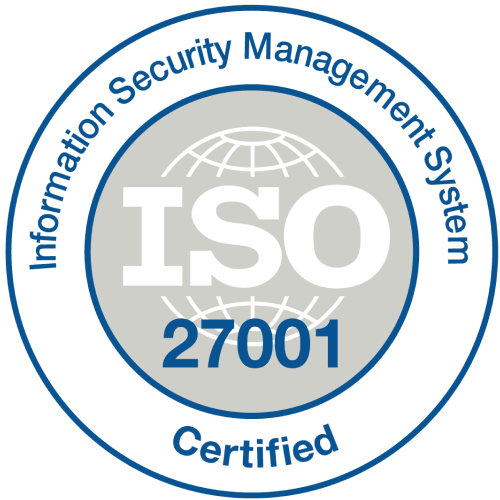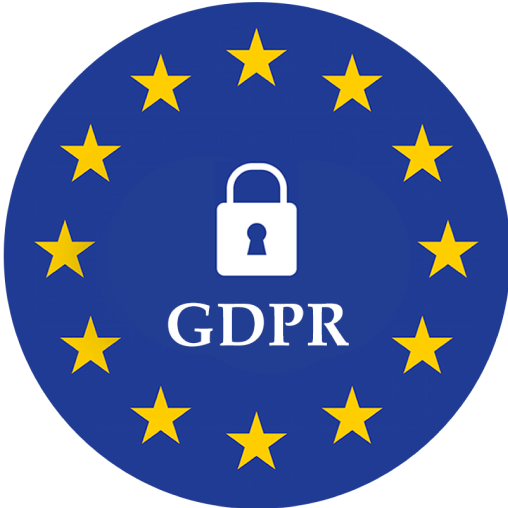
What is protected concerted activity?
Protected concerted activity refers to the rights employees have under the National Labor Relations Act (NLRA) to act together to improve their wages, working conditions, or other terms of employment. These rights apply whether workers are part of a union or not.
The term "concerted" means the activity involves two or more employees working together, or a single employee acting on behalf of others. When these actions are taken collectively and with a clear goal of mutual workplace improvement, they fall under what is known as protected concerted activity.
Common examples of protected activity include discussing pay with coworkers, raising concerns about safety, or approaching management as a group to request changes in scheduling or policies.
As long as the actions are lawful and aimed at mutual aid or protection, they are typically protected under concerted activity labor law. Even individual actions and employee conduct may be considered concerted if the employee is representing a group or preparing to involve others.
It's important to understand what concerted activities are and how they differ from individual complaints made solely for personal gain. Not every workplace complaint qualifies as protected concerted activity. For instance, a solo gripe without group interest or involvement may not be protected.
HR teams and employers must understand what constitutes a protected activity to ensure they’re in compliance with the NLRA and the National Labor Relations Board and avoid violating employee rights, whether in union or non-union environments.
Key takeaways from the blog
- Protected concerted activity lets employees act together to improve work conditions without fear of retaliation.
- It differs from individual complaints by involving collective efforts focused on shared workplace concerns.
- HR must understand, respect, and properly manage these activities to stay compliant with labor laws.
When is concerted activity important?
Concerted activity becomes crucial when employees face challenges that impact them collectively. It empowers workers to take joint action to improve their workplace environment and ensure fair treatment. Here are five scenarios where concerted protected activity plays a key role:
- Wage disputes and transparency: When employees collectively question how wages are determined or request fairer compensation, it becomes a protected concerted activity. This can include discussions about pay disparity or proposing uniform salary reviews across teams.
- Unsafe working conditions: If a group of workers raises concerns about hazardous equipment, poor ventilation, or lack of proper safety protocols, their action is considered protected activity. The collective nature gives weight to the issue and pressures employers to act.
- Unfair treatment or discipline: Employees joining together to address inconsistent discipline or favoritism signal protected concerted activities. It matters when workplace rules are enforced unfairly, and employees seek uniform treatment.
- Changes to scheduling or workload: A group of employees challenging sudden shift changes, increased workloads, or reduced breaks is engaging in what is protected concerted activity. Such issues affect work-life balance and can’t be solved by one person alone.
- Violation of workplace rights or policies: When workers act together to push back on policies that conflict with labor laws or internal rules, like denied rest breaks or ignored harassment complaints, they are exercising their rights under concerted activity labor law.
How does protected concerted activity differ from individual activity?
While both actions can stem from workplace concerns, only one is protected under the NLRA for group-related efforts. This table outlines how protected concerted activities stand apart from individual efforts in both scope and legal treatment.
How is concerted activity protected?
Concerted activity is protected under federal law to ensure employees can act together to improve their work environment without fear of punishment. The National Labor Relations Act (NLRA) provides these protections to unionized and non-unionized workers alike. Here's how the law safeguards protected concerted activity in the workplace:
- Section 7 of the NLRA: This section gives employees the right to engage in concerted activity for mutual aid or protection. It explicitly protects actions like collective complaints, discussions about pay, or organizing around workplace conditions.
- Restrictions on employer retaliation: Employers are prohibited from disciplining, firing, or threatening employees for participating in protected activity. Even informal group efforts, like talking with coworkers about management practices, are shielded under the law.
- Protection beyond unions: Protected concerted activities are not limited to unionized settings. Non-union employees who act together, such as by signing a petition or confronting a supervisor as a group, are still protected.
- Guidance from the NLRB: The National Labor Relations Board (NLRB) enforces protections under the concerted activity labor law. It investigates unfair labor practices and can order remedies when employers violate these rights.
- Coverage of online and digital activity: Employees discussing work conditions via email, messaging apps, or social media may still be covered. As long as the activity is work-related and involves mutual concerns, it’s likely considered a protected activity.
How to address protected concerted activity in unionized vs. Non-unionized workplaces?
Handling protected concerted activity requires a different approach depending on whether the workplace is unionized or not, but the legal protections under the NLRA remain consistent. In unionized environments, employees often engage in protected concerted activities through formal channels like grievance procedures, union representatives, or collective bargaining.
HR professionals and management must respect the union’s role in these processes and ensure they do not interfere with employees exercising their rights. Attempting to sideline union representatives or penalize employees for engaging in union-backed action can lead to serious legal consequences under concerted activity labor law.
In non-unionized workplaces, these activities may appear more informal, such as employees collectively raising concerns about scheduling or safety protocols. Just because there’s no union doesn’t mean employees lack protections. Managers should be careful not to dismiss group complaints or retaliate against employees who organize an employee meeting or circulate petitions, as these may still qualify as protected concerted activities.
The key difference lies in the structure and visibility of the activity. In union settings, concerted efforts are often more organized, while in non-union settings, they might seem spontaneous. HR must recognize both forms, train supervisors to respond appropriately, and document all interactions carefully. Understanding what is and what is not protected concerted activity helps reduce risk and maintain compliance across all types of workplaces.
Examples of protected concerted activities in the workplace
Protected concerted activities can take many forms and are not limited to formal protests or union actions. What matters is the activity undertaken by employees acting together or on behalf of others to address shared workplace concerns. Here are five real-world examples that show what counts as concerted protected activity:
- Discussing wages with coworkers: When employees openly talk about their salaries to uncover pay disparities or seek equal treatment, it is considered a protected activity. Even if an employer has a “no salary talk” policy, such discussions are protected under federal law.
- Circulating a petition for better break policies: A group of employees signing and submitting a petition requesting longer or more frequent breaks is engaging in protected concerted activity. This collective effort focuses on improving conditions for everyone, not just one person.
- Refusing unsafe work conditions as a group: If several employees jointly refuse to perform a task due to dangerous conditions, their refusal is protected. This kind of action emphasizes mutual safety and qualifies as concerted activity under labor law.
- Meeting outside of work to discuss management practices: Employees who gather after hours to talk about how they’re being treated or to coordinate a complaint to HR are participating in protected concerted activities—even if the action is informal and off-site.
- Posting about workplace issues on social media: When workers collectively voice concerns online, such as bad scheduling or unfair policies, it may still be protected if it involves mutual concerns. Digital discussions that include coworkers can fall under what is protected concerted activity.
How to recognize when protected concerted activity is occurring?
Recognizing protected concerted activity can be tricky, especially when it’s informal or not union-related. But HR must be alert to collective employee efforts tied to working conditions. Here are five signs that what’s happening may qualify as concerted protected activity:
- Multiple employees raising the same issue: If several team members voice the same concern, like requesting schedule changes or complaining about safety, it’s likely a protected activity. The focus is on mutual benefit, not just one person’s problem.
- An employee speaks on behalf of others: Even if one person files a complaint or raises an issue, it may still be protected if they’re doing so for coworkers. Representing group interests counts under concerted activity labor law, even without formal delegation.
- Group discussions about workplace changes: When employees talk together about wages, hours, or company policies with the goal of seeking change, that’s a red flag for protected activity. These conversations are legally safeguarded—even if management isn’t directly involved.
- Circulation of group petitions or letters: If employees create and sign a letter or petition asking for changes to working conditions, that’s a classic example of protected concerted activity. The act of organizing around shared concerns is what makes it protected.
- Organizing meetings or digital chats about work: Employees who start Slack channels, group texts, or in-person meetups to discuss how they’re treated or to coordinate actions are likely engaging in protected activity, even outside work hours.
Training for HR teams on protected concerted activity: What to know
Effective HR training is essential to avoid missteps when employees engage in protected concerted activity. HR professionals must understand what is—and what is not—protected under the law. Here’s what every HR team should be equipped with:
- Understand the legal definition and scope: Training should begin with a deep dive into what protected concerted activity means under the NLRA. HR must know that these rights apply in both unionized and non-unionized settings and include group or representative actions on workplace issues.
- Learn to identify common forms of protected activity: Workshops should use real-life scenarios to help HR recognize protected activity, from wage discussions to informal Slack group chats. Understanding subtle signs is key to avoiding accidental retaliation or legal violations.
- Train managers to respond appropriately: Line managers often encounter these situations first. HR should lead sessions teaching supervisors what they can and cannot say or do when employees collectively raise concerns. Emotional reactions or threats can easily cross legal lines.
- Differentiate protected vs. non-protected activity: HR should be trained to distinguish between legitimate concerted activity and behavior that isn’t protected, such as individual complaints or misconduct masked as group effort. Knowing what is not protected concerted activity helps prevent costly misjudgments.
- Document and review carefully before acting: Training should emphasize the importance of documentation. Before disciplining anyone involved in a group action, HR must review the facts and consult labor counsel to avoid infringing on protected activity rights.
How to prevent conflicts surrounding protected concerted activity
Preventing conflicts related to protected concerted activity requires a proactive, informed approach from HR and management. When employees feel heard and respected, tensions are less likely to escalate. Here are key strategies to keep workplace conflicts around concerted activity at bay:
- Create open communication channels: Encourage regular, transparent dialogue between employees and management. When workers know they can raise concerns safely, they’re less likely to resort to concerted actions out of frustration.
- Train managers on legal boundaries: Managers should understand what constitutes protected concerted activity and how to respond without retaliation. Clear guidance helps prevent misunderstandings and unlawful disciplinary actions.
- Address issues promptly and fairly: Timely responses to employee concerns reduce the likelihood that group actions will be necessary. A fair investigation process builds trust and lowers the chances of conflict escalation.
- Promote a respectful workplace culture: Respectful treatment of employee opinions—even when challenging—is critical. When employees feel valued, they are less inclined to band together against management.
- Document all interactions carefully: Keep clear records of employee complaints and management responses. Proper documentation can clarify intentions and protect both parties if disputes arise over concerted activities.
Role of HR in managing protected concerted activity
HR plays a crucial role in navigating the complexities of protected concerted activity, balancing employee rights with organizational needs. Their approach can shape how smoothly these situations unfold. Here’s what HR’s role typically involves:
- Ensuring legal compliance: HR must stay well-versed in labor laws, especially the NLRA, to protect employees’ rights while guiding management. This helps prevent unlawful retaliation and costly legal challenges related to concerted protected activity.
- Training and educating managers: HR is responsible for equipping supervisors with knowledge about what protected concerted activities look like and how to respond appropriately. Well-trained managers are less likely to escalate conflicts inadvertently.
- Serving as a communication bridge: HR often acts as the intermediary between employees and leadership during concerted activities. They facilitate dialogue, helping both sides understand concerns and work toward resolution without violating employee rights.
- Investigating and documenting incidents: When protected concerted activity arises, HR must carefully investigate circumstances and maintain thorough records. This ensures decisions are based on facts and support compliance with concerted activity labor law.
- Developing fair policies and procedures: HR should create clear, transparent workplace policies that respect protected activities while setting expectations for conduct. These policies reduce confusion and help manage employee relations effectively.
FAQs
1. When is concerted activity not protected?
Concerted activity is not protected when it involves illegal actions, such as violence or threats, or when employees act solely for personal reasons rather than collective concerns. Also, if the conduct is excessively disruptive, insubordinate, or violates clear workplace rules unrelated to employee rights, it may lose protection under concerted activity labor law.
2. Can an employer fire an employee for participating in protected concerted activity?
Generally, employers cannot fire employees for engaging in protected concerted activity. Being terminated in retaliation for such activity violates the NLRA. However, if the employee’s behavior during the activity involves serious misconduct or breaches legitimate workplace policies, the employer may have grounds for discipline or dismissal.
3. What should HR do if employees are engaging in protected concerted activity during work hours?
HR should allow employees to exercise their rights without interference, but monitor to ensure work disruption is minimal. It’s important to document the situation, avoid retaliation, and communicate respectfully. HR should guide managers on responding lawfully and support dialogue to address underlying employee concerns.
4. What is an example of a protected activity?
An example of protected activity is a group of employees collectively discussing their wages or working conditions. This could include signing a petition requesting schedule changes or jointly refusing unsafe work tasks. Such actions, aimed at mutual workplace improvement, qualify as protected concerted activities under labor law.
5. How can I ensure my business is in compliance with the NLRA regarding concerted activities?
To comply with the NLRA, businesses should train HR and management on protected concerted activity rights, establish clear policies respecting employee protections, avoid retaliation, and consult legal counsel and the labor board before disciplining employees involved in group actions. Regular reviews of workplace practices help maintain ongoing compliance with concerted activity labor law.
Empower, Engage & Succeed with the Complete Employee Engagement Software
DISCOVER NOWGet breaking news and curated stories delivered to your inbox every day. Be the first to know what’s happening around the world



.svg)















.png)

